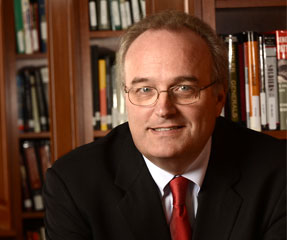
A friend recently sent me an article from The EvoLLLution, “Preparing a Traditional University for the 60-Year Curriculum,” by Josh Herron, dean of Online and Continuous Learning at Anderson University. Herron discusses ongoing corporate initiatives to train and retrain their employees, noting that universities should consider the 60-Year Curriculum (ages 15-75) as a framework to prepare people for lifetime learning in order to continually re-tool or upskill because of technology disruption eliminating their jobs. Citing badges, certificates and “other modular approaches,” in addition to Competency Based Education (CBE), he assesses the Anderson initiatives accomplished thus far using this framework.
One of the articles he notes was an EvoLLLution interview with Hunt Lambert, dean of Continuing Education and Extension at Harvard. In the interview, Mr. Lambert suggests that higher education morph from its two-year A.A., four-year B.A., two-year M.A., and seven-year Ph.D. learning models to a 60-year model to cover the likely major career changes/shifts of adult learners. I found it particularly noteworthy that he stated that if higher education institutions do not make these changes, then Facebook, Amazon, Microsoft, Apple, Google, Salesforce, and others will. He further states that, in the long run, any individual school is unlikely to supply more than 20 percent of any learners’ solutions from their faculty-based degree programs (italics are mine). I wholeheartedly agree.
APUS operates in a 100% online environment, and we have discussed the concept of a future learning platform that would include both organic and third-party content curated by us. We have not yet determined how the business model for this platform would be structured.
Lambert notes that the top universities will not have to take any such measures since they will be among the few to succeed in today’s traditional model of higher education. All institutions other than the elite universities will need to offer modular, stackable, and portable credentials for part-time learners who cannot control the time and place of learning. He posits five recommendations for non-elite universities:
- Design and implement the new credentialing system that is a superset of degrees using digital badges, digital certificates, and blockchain-type security.
- Define and build the long-term meta-curriculum framework and establish that in academic policy.
- Implement the services needed to win the loyalty of learners in your ecosystem without denying them access to others’ offerings.
- Build the new academic stack of technology platforms and applications. This is a CRM-based solution that starts and ends with the learner, not an SIS-type solution that starts and ends with the school’s approved catalog and degrees.
- Advocate to restructure state and federal support for postsecondary education, and work with companies for better tuition reimbursement plans so that adults do not have to increase their student loan debt to stay relevant at work. This includes driving costs out of the offerings so that tuitions remain accessible to talent that is otherwise excluded.
I agree with these recommendations and am pleased that we have progressed substantially over the years in related initiatives on behalf of the adult learners comprising most of our students and our distance learning structure. Institutions considering adding adult learners can accelerate their progress by partnering with more progressive institutions and/or companies that have developed some of these capabilities.
A similar EvoLLLution article by Chris Dede, professor of Learning Technologies at the Harvard Graduate School of Education, explains why he and his colleagues believe a 60-year curriculum is necessary. He cites several independent reports that provide directional guidance toward what the future of work might look like. The first, published by Pearson in 2017, emphasizes how the workplace in 2030 will be shaped by globalization, data-intensive decision-making, advances in digital tools and media, and artificial intelligence.
Dr. Dede cites another report from the Organization for Economic Co-operation and Development that discusses the needs for schools to prepare students entering kindergarten in 2018 for jobs not yet created, technologies not yet invented, and to solve problems not yet anticipated. He notes that initiatives to address this have been created from at least one institution’s perspective — Stanford’s Open Loop University. He adds that some of the services required for lifelong learning will require partnerships and collaborations with organizations both inside and outside of academics.
I like the 60-Year Curriculum concept because it readily describes the future expectations of learning and career changes for people yet to enter college. Our current learning environment reminds me of a line from British Prime Minister Harold Macmillan’s famous 1960 speech (substituting the words “higher education” for “this continent”): “The wind of change is blowing through higher education…whether we like it or not.” Just as his speech portended great changes and disruption for years to come in Africa, we know that traditional higher education is not the model for most of our U.S. and global citizens thanks to technology’s influence on employment and the workplace of the future. Institutions that can find a niche somewhere on the 60-Year Curriculum pathway are most likely to be among the survivors in 2040.











